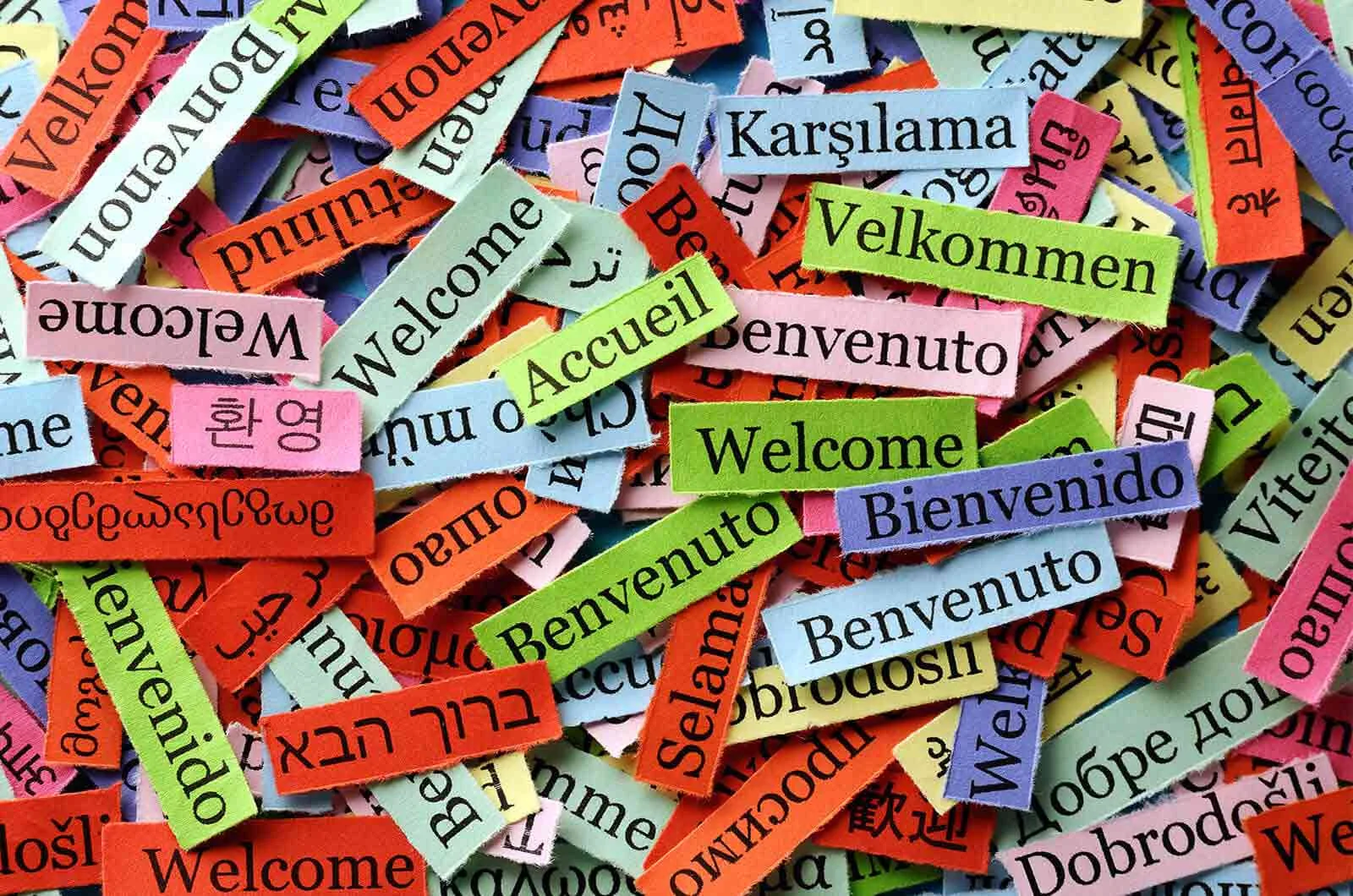
Uploading...

9 Fun Facts about the Spanish Language
The Spanish language is diverse and beautiful. With roots in Roman and Arabic cultures, the language has an exciting history. Spanish is also one of the most spoken languages worldwide, with more native Spanish speakers than English speakers globally. Indeed, there are many fun facts about Spanish culture and language to uncover!
Are you interested in learning more about the language and its nuances? These nine fun facts about Spanish provide a brief introduction to many of the most exciting parts of the Spanish language. They might also provide the motivation you need if you’re thinking about learning Spanish.
1. The Spanish Language is Spoken in 21 Countries
One of our favourite facts about Spanish is that it is spoken as the official language in 21 countries worldwide. This means that those countries use the language in all their official content, such as documents and legal issues. The majority of the population also uses it for everyday conversations and written communication.
Some countries with Spanish as an official language include Argentina, Chile, Costa Rica, Mexico, Peru, and Spain. In fact, most people assume that all Spanish speakers live in Spain and parts of South America. But believe it or not, a single African country also officially uses the Spanish language: Equatorial Guinea.
2. There are 540 Million Spanish Speakers Worldwide
Another of our favourite fun facts about Spanish is that there are over 540 million Spanish speakers worldwide. This makes it the fourth-most common language around the world, behind English (1,132 million), Mandarin (1,117 million), and Hindi (615 million).
Another fun fact: Spanish is the second most spoken language worldwide when counting first-language speakers only. It is also the third most used language on the internet! The popularity of the language is evident when we look at the fact that the US has about 50 million citizens who are Spanish speakers while Spain has 45 million. This shows us exactly how popular the language is.
3. Modern-Day Spanish Dates Back 700 Years
The Spanish language originally stems from Latin, spoken by the Romans. These language roots make Spanish one of the Romance languages, along with French, Italian, and Portuguese. Latin was combined with the local language and gradually evolved into Spanish until we got to the language we all know and love today.
The modern Spanish language dates back about 700 years. The language was adopted by King Alfonso X in the year 1200 and became the official language of the country. The Spanish language has spread throughout the world since then, as has the Spanish culture.
4. The Spanish language is Heavily Influenced by Arabic
Latin was not the only language that influenced Spanish speakers. Curiously enough, Arabic also had a significant influence on the growth of the Spanish language. This happened when the Arab Moors conquered Spain and brought their language with them. They occupied the Iberian Peninsular for around 800 years, meaning much of their culture and traditions were adopted in Spain.
According to The Spanish Academy, there are more than 4,000 words in the Spanish language that derive from Arabic. Let’s look at an example to demonstrate this fun fact: in Spanish, the word “sugar” is “azucar”. This word comes from the Arabic word “al-sukkar.”
5. The First Spanish Novel was Don Quixote
The following facts about Spanish may be familiar to someone who is a literature lover. But it might surprise some that Don Quixote by Spanish speaker Miguel de Cervantes is the first novel to become available in the Spanish language!
The Spanish-to-English translation of this title is “Sir Idealist.” This is still one of the most popular books in Spanish culture today. Don Quixote tells the story of a man who longs to be a knight so that he can win his lady. Though filled with humour and lightheartedness, there are also rough times and challenging lessons that Quixote must learn.
6. The Spanish language is Often Used in Pop Culture
While the literary classic Don Quixote is very old, the Spanish language still holds an important place in pop culture today. You can turn on any pop radio station, and you will hear a few words from the Spanish language! For example, Despacito by Spanish speaker Luis Fonsi was played in its original Spanish translation, but there was a remix that included an English part. The Spanish-to-English translation of this song title is “slowly.”
Many popular books and movies are also translated into English or adopted into cultures in their Spanish form. One brilliant example is Pan’s Labyrinth. Directed by Guillermo del Toro, Pan’s Labyrinth became a worldwide hit and has only been subtitled into other languages. The Spanish translation of “Pan’s Labyrinth” is “El Laberinto del Fauno.”
7. Many Spanish Words Have No Direct Translation
One of the most interesting facts about Spanish is that there are several unique words with no equivalents in other languages. The best way to demonstrate this is by looking at translations from Spanish to English. For instance, Spanish speakers often take part in a “sobremesa.” This is where everyone stays at the table after a meal. The families then share a drink (whether alcoholic or non-alcoholic) and some good laughs.
Another example is the Spanish phrase “verguenza ajena.” In the Spanish language, these words are used to describe the feeling you might get when you feel embarrassed for someone without feeling sorry for yourself. There is no literal translation of this phrase into English.
8. Punctuation Works Differently in Spanish
You might have noticed that the Spanish language uses upside-down punctuation marks at the beginning of some sentences. Now for the fun facts: in Spanish is the only place you’ll see this use of punctuation! It is the only language in the world that uses these inverted punctuation points.
The reason why is equally as fascinating: it tells the reader that the following sentence is a question ahead of time. This allows Spanish speakers to add the required inflection in their voice so that their listeners understand that a question is being asked. Inverted punctuation marks are the official standard of the Royal Spanish Academy, which declares the official rules of the Spanish language.
9. The US Will Have the Most Spanish Speakers by 2050
The last of our fun facts about Spanish is on future predictions: Experts think that by 2050, more than 10% of the world will be able to communicate in Spanish. The US should be the world’s largest Spanish-speaking country by the same year, with more than 132 million Spanish speakers in America. If future predictions are correct, the Spanish language will have grown more than 1,300%!
An important fact about Spanish is that it is the second most studied language in the world. It’s no secret that learning Spanish translation could be very beneficial, especially in America. It may seem like a daunting task, but do not fear. Experts say that it takes only 24 weeks of practice to learn the language. After 24 weeks, you should be able to communicate on a professional level.
Renaissance Translation’s Spanish Translation Services
The fun facts about Spanish demonstrate that the Spanish language is an amazing one! It may sometimes take work to figure out Spanish to English translations. But many Spanish words give us glimpses into the beautiful Spanish culture. With so many people learning Spanish and expected to be able to become Spanish speakers, we might not want to put off our Spanish lessons much longer!
If you need help with your Spanish translations, Renaissance Translations can help. Our extensive network of Spanish language experts enables us to offer professional Spanish translation services in all subject fields. European Spanish, Mexican Spanish, South American Spanish, and African Spanish are available. We are an associate member of the Associations of Translation Companies (ATC), so you can rest assured that your documents are in safe hands. Contact our team today to discuss your Spanish translation project or request a quote online.
Related Posts


© Copyright 2023 Renaissance Translations Ltd | Company Registration No. 07472408 | VAT Registration No. 313 4632 33


